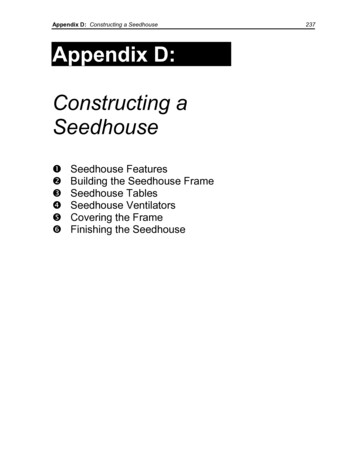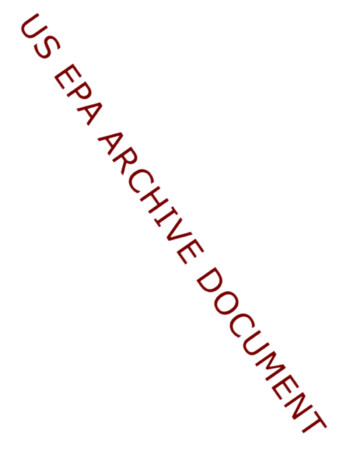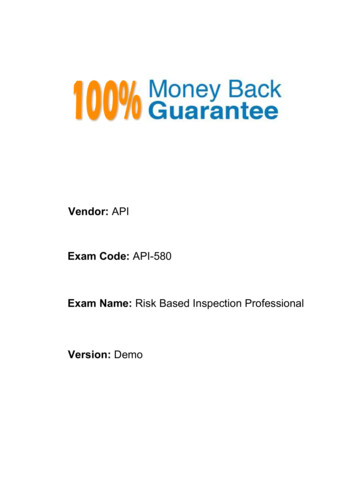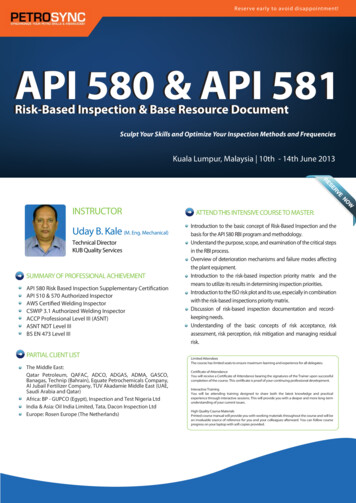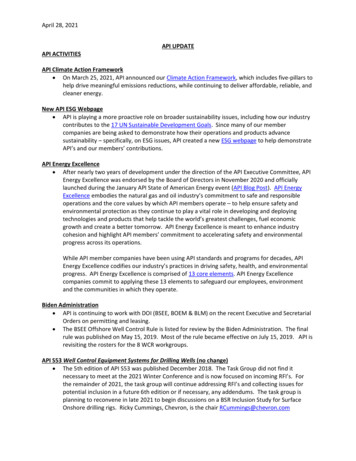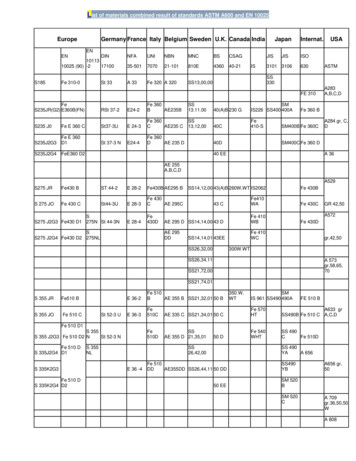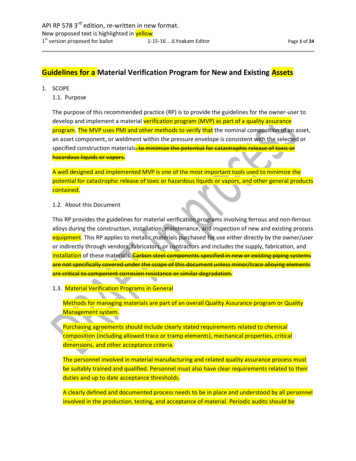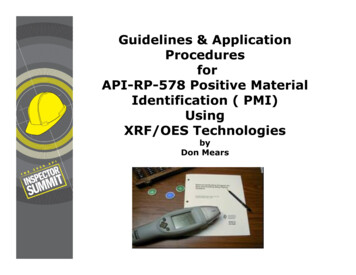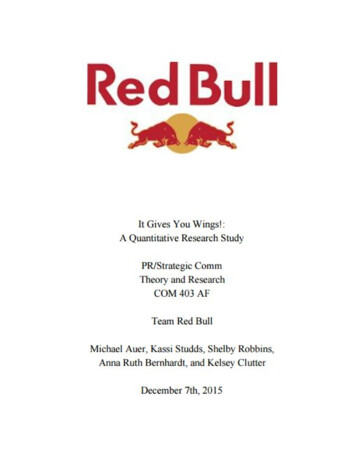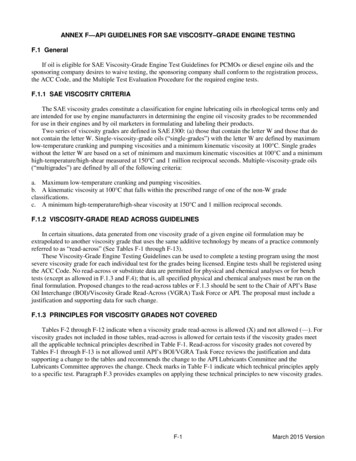
Transcription
ANNEX F—API GUIDELINES FOR SAE VISCOSITY–GRADE ENGINE TESTINGF.1 GeneralIf oil is eligible for SAE Viscosity-Grade Engine Test Guidelines for PCMOs or diesel engine oils and thesponsoring company desires to waive testing, the sponsoring company shall conform to the registration process,the ACC Code, and the Multiple Test Evaluation Procedure for the required engine tests.F.1.1 SAE VISCOSITY CRITERIAThe SAE viscosity grades constitute a classification for engine lubricating oils in rheological terms only andare intended for use by engine manufacturers in determining the engine oil viscosity grades to be recommendedfor use in their engines and by oil marketers in formulating and labeling their products.Two series of viscosity grades are defined in SAE J300: (a) those that contain the letter W and those that donot contain the letter W. Single-viscosity-grade oils (“single-grades”) with the letter W are defined by maximumlow-temperature cranking and pumping viscosities and a minimum kinematic viscosity at 100 C. Single gradeswithout the letter W are based on a set of minimum and maximum kinematic viscosities at 100 C and a minimumhigh-temperature/high-shear measured at 150 C and 1 million reciprocal seconds. Multiple-viscosity-grade oils(“multigrades”) are defined by all of the following criteria:a. Maximum low-temperature cranking and pumping viscosities.b. A kinematic viscosity at 100 C that falls within the prescribed range of one of the non-W gradeclassifications.c. A minimum high-temperature/high-shear viscosity at 150 C and 1 million reciprocal seconds.F.1.2 VISCOSITY-GRADE READ ACROSS GUIDELINESIn certain situations, data generated from one viscosity grade of a given engine oil formulation may beextrapolated to another viscosity grade that uses the same additive technology by means of a practice commonlyreferred to as “read-across” (See Tables F-1 through F-13).These Viscosity-Grade Engine Testing Guidelines can be used to complete a testing program using the mostsevere viscosity grade for each individual test for the grades being licensed. Engine tests shall be registered usingthe ACC Code. No read-across or substitute data are permitted for physical and chemical analyses or for benchtests (except as allowed in F.1.3 and F.4); that is, all specified physical and chemical analyses must be run on thefinal formulation. Proposed changes to the read-across tables or F.1.3 should be sent to the Chair of API’s BaseOil Interchange (BOI)/Viscosity Grade Read-Across (VGRA) Task Force or API. The proposal must include ajustification and supporting data for such change.F.1.3 PRINCIPLES FOR VISCOSITY GRADES NOT COVEREDTables F-2 through F-12 indicate when a viscosity grade read-across is allowed (X) and not allowed (—). Forviscosity grades not included in those tables, read-across is allowed for certain tests if the viscosity grades meetall the applicable technical principles described in Table F-1. Read-across for viscosity grades not covered byTables F-1 through F-13 is not allowed until API’s BOI/VGRA Task Force reviews the justification and datasupporting a change to the tables and recommends the change to the API Lubricants Committee and theLubricants Committee approves the change. Check marks in Table F-1 indicate which technical principles applyto a specific test. Paragraph F.3 provides examples on applying these technical principles to new viscosity grades.F-1March 2015 Version
Table F-1—Technical Principles for New Viscosity Grades and Read Across150(Applies to oils with HTHSPassenger Car Motor Oilsa Detergent (dispersant)inhibitor (DI) content of theread-across viscosity gradeshall be equal to or higherthan that of the originalviscosity grade. The increasein DI is limited to themaximum allowed by theACC Codeb Base stock blend kinematicviscosity at 100 C of theread-across viscosity grademust be equal to or higherthan that of the originalviscosity grade, consideringthe precision of the testmethodc The viscosity modifier (VM)content of the read-acrossviscosity grade must be equalto or lower than that of theoriginal viscosity gradeDiesel Engine Oilsa Detergent (dispersant)inhibitor (DI) content of theread-across viscosity gradeshall be equal to or higherthan that of the originalviscosity grade. The increasein DI is limited to themaximum allowed by theACC Codeb Base stock blend kinematicviscosity at 100 C of theread-across viscosity grademust be equal to or higherthan that of the originalviscosity grade, consideringthe precision of the testmethodc The viscosity modifier (VM)content of the read-acrossviscosity grade must be equalto or lower than that of theoriginal viscosity graded Finished oil volatility of theread-across viscosity grademust be equal to or lowerthan that of the originalviscosity grade 2.6 mPa s)IIDL-38/VIIIIIIE/IIIF/IIIGIIIGA(Note 2)IIIGBIVAVEVGVIA/VIB/VID Note 3NANA NA NANote 3NANANote 4Note 4NA or orNote 3Note5Note51M-PC Notes:1. principle is applicable; NA not applicable.2. Technical principles for the Sequence IIIGA are limited to 0W, 5W, and 10W multigrades.3. New viscosity grades and associated read-across can only be added after review by the API BOI/VGRA Task Force and approval by theAPI Lubricants Committee.4. Viscosity modifier content must be no more than 1.5 times higher than the viscosity modifier content in the oil on which the test was run.5. For dispersant-type VM, the VM content of the read-across viscosity grade must be equal to or higher than the original viscosity grade.6. Read-across viscosity grades must contain an equal amount of the same Group V base stock (e.g., ester) in the finished oil blend if aGroup V base stock is used in the original viscosity grade.F-2March 2015 Version
F.2 Requirements for Passenger Car Motor OilsF.2.1 Blends shall use only base stocks as defined in Annex E.F.2.2 Base oils introduced from other manufacturers shall be tested in accordance with Annex E.F.2.3 The same detergent-(dispersant) inhibitor (DI) portion of the total performance additive package shall beused at equal or higher concentrations for alternative viscosity grades. The increase in DI is limited to thatallowed in the ACC Code. Viscosity modifier, foam inhibitor, and pour point depressant levels may be adjustedfor alternative viscosity grades, in accordance with the ACC Code.F.2.4 ACC Code and ASTM Multiple Test Evaluation Procedure testing practices shall be followed.F.3 Examples Using VGRA Tables and Technical Principles for VGRAF.3.1 GENERALRead-across to or from viscosity grades not shown in the tables is allowed if the requirements in F.1.3 aremet. If the requirements are not met, read-across is not allowed. Examples of how F.1.3 can be applied areprovided below.F.3.2 EXAMPLE 1In this example, a Sequence IIIE test is run on an SAE 0W-30 core viscosity grade [i.e., tested viscositygrade]. What other viscosity grades can be covered by read-across from the tested SAE 0W-30? To answer thisquestion, take the following steps:Step 1: Determine if requirement “a” in Table F-1 is met for all the desired read-across viscosity grades. Thisrequires keeping the DI constant, or if higher, consistent with the ACC Code of Practice. Since an SAE 0W-30 ismost likely blended with some or all Group III or Group IV base stocks, many of the higher viscosity gradeswould probably not be part of this product line. The higher viscosity grades, if marketed, could have a differentDI and/or base stock slate.Step 2: For the read-across viscosity grades (i.e., those you are reading to) of interest in Table F-4, determine ifthe requirements for both “b” and “c” in Table F-1 can be met concurrently. This involves having equal or higherbase stock blend viscosity and a VM content in the “read to” multigrades that is no more than 1.5 times higherthan that in the SAE 0W-30. There are some grades that are certain to meet “b” and “c”, and some where it willdepend on the blending approach. Some trial blends may have to be made. Decide if there are single gradesdesired or feasible considering the base stocks used in the core formulation.Step 3: For viscosity grades that you wish to cover by read-across but are not shown in Table F-4, follow theinstructions for “b” and “c” described in Step 2.Step 4: Determine which viscosity grades meet Table F-1 requirements “a,” “b”, and “c”. These grades arecovered by viscosity grade read-across. Grades that fail to meet all these requirements are not covered by readacross.Note: The marketer of a formulation has the final responsibility for assuring that the product meets API requirements.F.3.3 EXAMPLE 2In this example, an SAE 5W-30 blended with Group IV base stocks and a nondispersant VM has passed a VEtest. A marketer wants to read-across this test to an SAE 5W-40 grade, one not included in Table F-7. Since theSAE 5W-40 is not included in Table F-7, “a,” “b”, and “c” in Table F-1 must be consulted. It is likely that the DIcontent of the SAE 5W-40 would be equal to or higher than the SAE 5W-30, so requirement “a” would be met.However, “b” and “c” probably cannot be met. A SAE 5W-40 oil would normally not have a higher base stockF-3March 2015 Version
blend kinematic viscosity at 100ºC than an SAE 5W-30, and more nondispersant VM would be required in a SAE5W-40 oil. Therefore, this read-across is not allowed.F.4 VGRA for Other Bench TestsF.4.1 HOMOGENEITY AND MISCIBILITY (H&M) AND EOFT (GM 9099P FILTERABILITY–STANDARD METHOD)Homogeneity and Miscibility (H&M) and Engine Oil Filterability [EOFT (formerly GM 9099P Filterability–Standard Method)] tests are required in the core data set (see ACC Code for definition of core data set), and thenread-across is allowed to all other viscosity grades within the same base stock slate.F.4.2 EOWTT (GM 9099P FILTERABILITY–MODIFIED METHOD FOR ILSAC GF-2/GF-3)The Engine Oil Water Tolerance Test [EOWTT (formerly GM 9099P Filterability–Modified Method forILSAC GF-2/GF-3)] must be run on the formulation with the highest additive (DI/VI) combination. Results arethen read-across to all other base oil/viscosity grade formulations using the same or lower concentration of theidentical additive (DI/VI) combination. Each different (DI/VI) combination must be tested.F.4.3 BALL RUST TEST (BRT)If there is one passing Ball Rust Test (BRT) (ASTM D 6557) in the core data set as defined by the ACCCode, read-across is allowed to all other viscosity grades and base oil slates.F.4.4 EMULSION RETENTION D7563 - VGRAFor oils formulated with Group II and/or Group III base stocks, the Emulsion Retention ASTM D7563 isrequired only for the highest additive (DI/VI) concentration. Read across is allowed to all other Group II, GroupIII and combinations of Group II and Group III base oil/viscosity grade formulations using the same or lowerconcentration of the identical additive (DI/VI) combination. If the PPD type is changed for the DI/VIcombination, testing is required.F.5 Requirements for Diesel Engine OilsF.5.1 Blends shall use only base stocks as defined in Annex E.F.5.2 Base oils introduced from other sources shall be tested in accordance with Annex E.F.5.3 The same detergent-(dispersant) inhibitor (DI) portion of the total performance additive package shall beused at equal or higher concentrations for alternative viscosity grades. The increase in DI is limited to thatallowed in the ACC Code. Viscosity modifier, foam inhibitor, and pour point depressant levels may be adjustedfor alternative viscosity grades, in accordance with the ACC Code.F.5.4 If there is one passing HTCBT (D6594) in the core data set as defined by the ACC Code of Practice, readacross is allowed to all other viscosity grades and base oil slates.Note: Engine manufacturers may not recommend all of the viscosity grades shown in Tables F-2 through F-13 for a particular engine type.F-4March 2015 Version
Table F-2—Groups I, II, III and IV Viscosity Read-Across: L-38/Sequence VIII TestsTest es:1. X read-across is permitted for the viscosity grades identified based on data and some applications of the technical principlesapproved by API BOI/VGRA Task Force and API Lubricants Committee.2. A dash (—) means that read-across is not permitted; NA not applicable.3. New viscosity grades and associated read-across are allowed if the requirements described in F.1.3 are met.4. Tested formulations containing Group V stocks must contain an equal amount of the same Group V base stock (e.g., ester) in thefinished oil blend for application of viscosity grade read-across.5. The read-across in this table applies only to bearing weight loss and piston varnish. All multigrade oils must stay-in-grade for 10hours in the L-38/Seq. VIII tests (see ILSAC GF-1, GF-2, GF-3 and GF-4). Data to support stay-in-grade “read-across” shall beprovided by the licensee for API Service Categories SM, SL, SJ, SH, and CG-4 and ILSAC GF-1, GF-2, and GF-3 oils (0W-XX,5W-XX, 10W-XX).6. The guidelines in this table apply only to bearing weight loss. All multigrade oils must stay in grade for 10 hours. Data to supportstay-in-grade read across shall be provided by the licensee for active API Service Categories and ILSAC Standards. ASTM D6278 (30 passes) may be used to support stay-in-grade requirements, where the following limits must be met at 100 C: SAE XW20 5.6 cSt minimum, XW-30 8.5 cSt minimum, XW-40 11.5 cSt minimum, and XW-50 15.0 cSt minimum.Table F-3—Groups I, II, III and IV Viscosity Read-Across: Sequence IID TestTest Run on5W-205W-3010W10W-3010W-40Can Be “Read-Across” XNAX—XXXNA—X
Two series of viscosity grades are defined in SAE J300: (a) those that contain the letter W and those that do not contain the letter W. Single-viscosity-grade oils (“single-grades”) with the letter W are defined by maximum low-temperature cranking and pumping viscosities and a minimum kinematic viscosity at 100 C. Single grades without the letter W are based on a set of minimum and .
![API Ballot: [Ballot ID] – API 510 & API 570, Deferrals, Rev05](/img/5/api510andapi570deferralsrev5.jpg)
